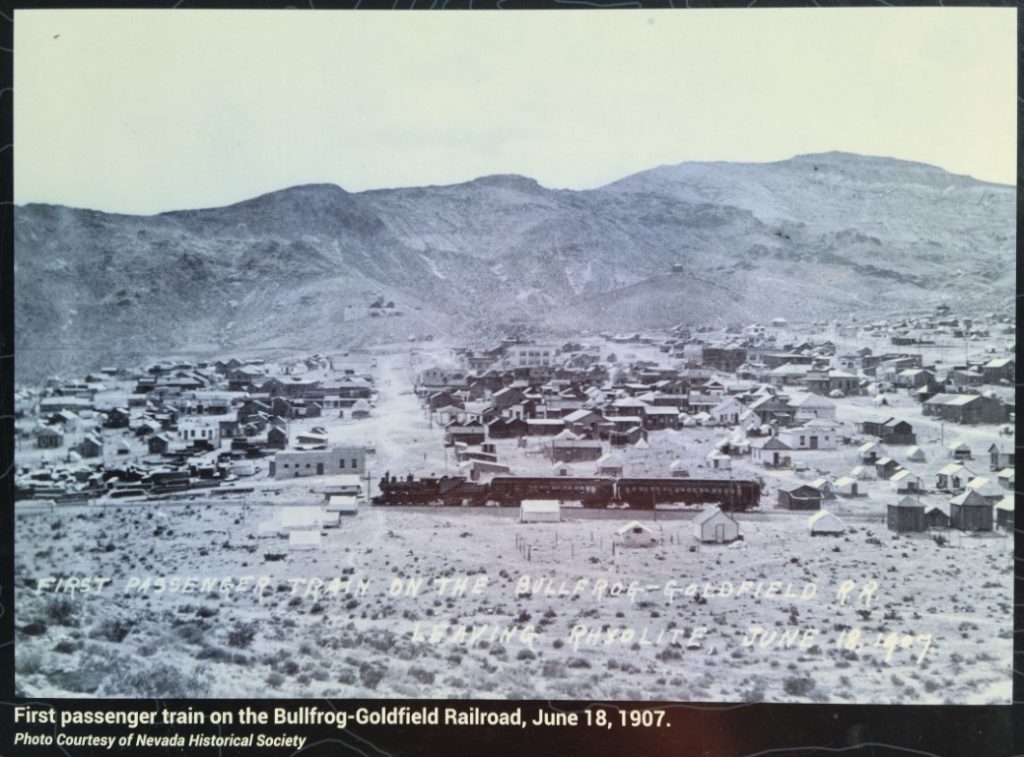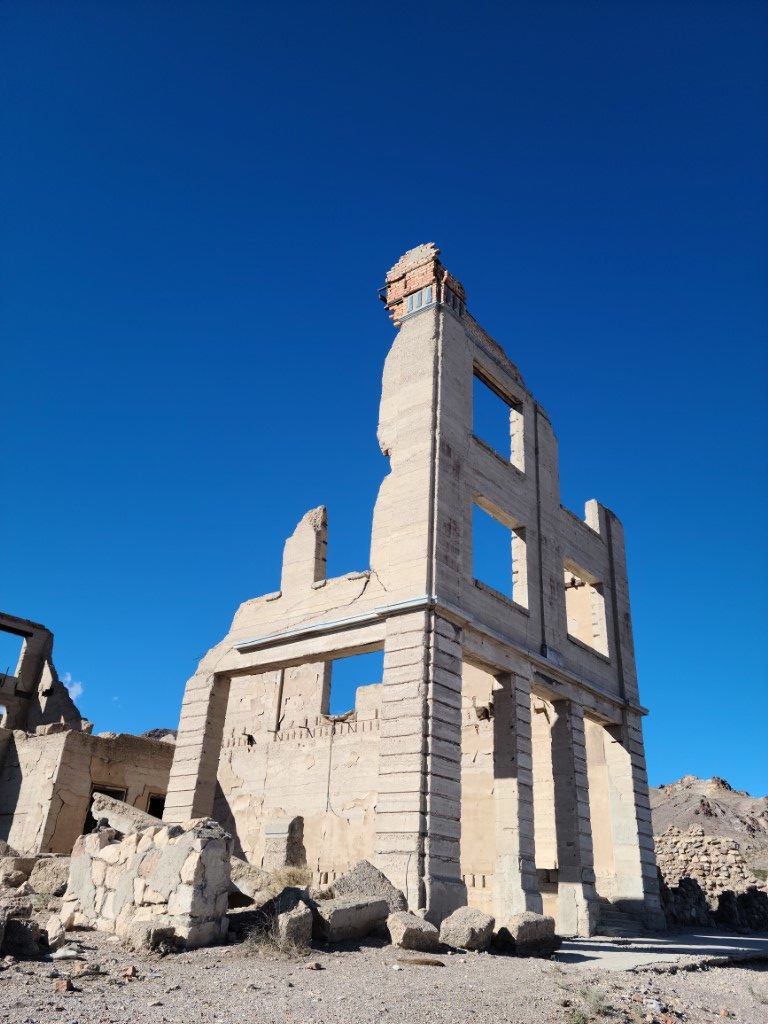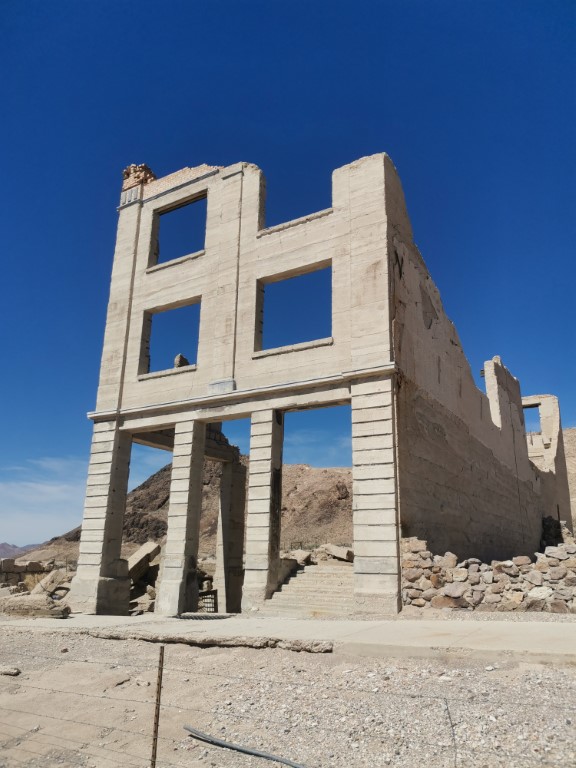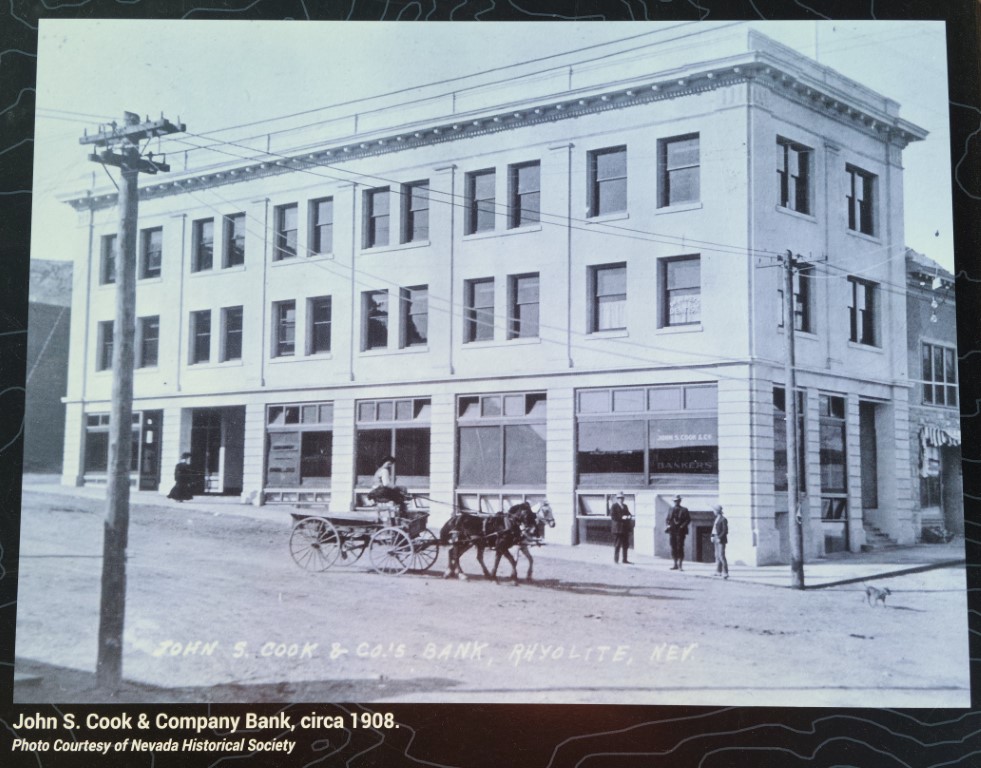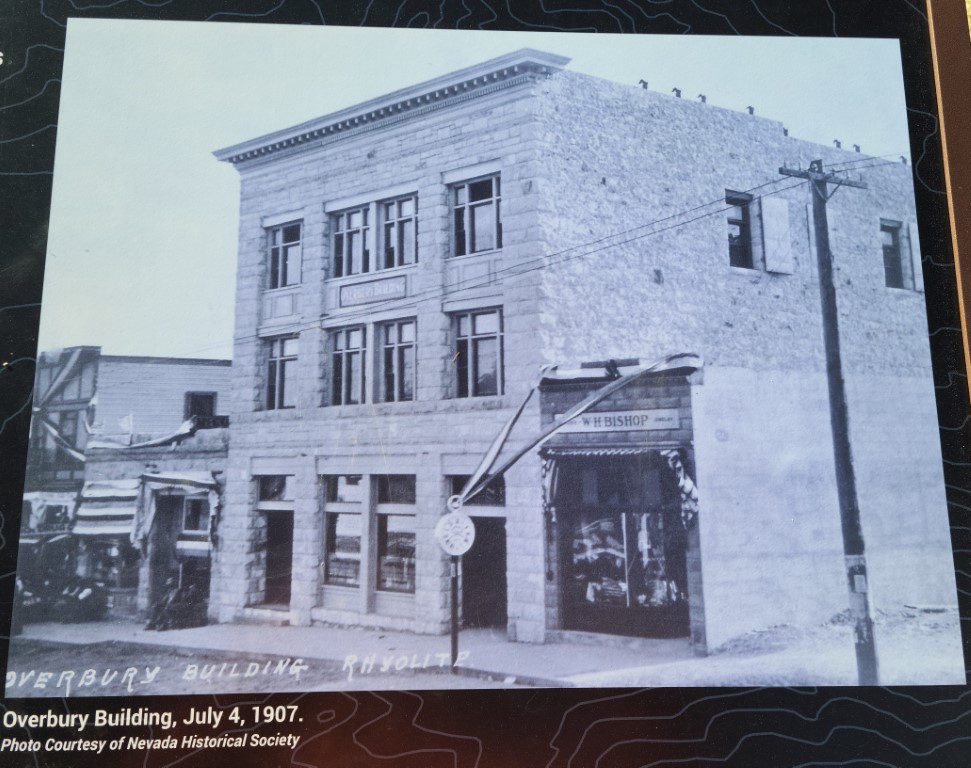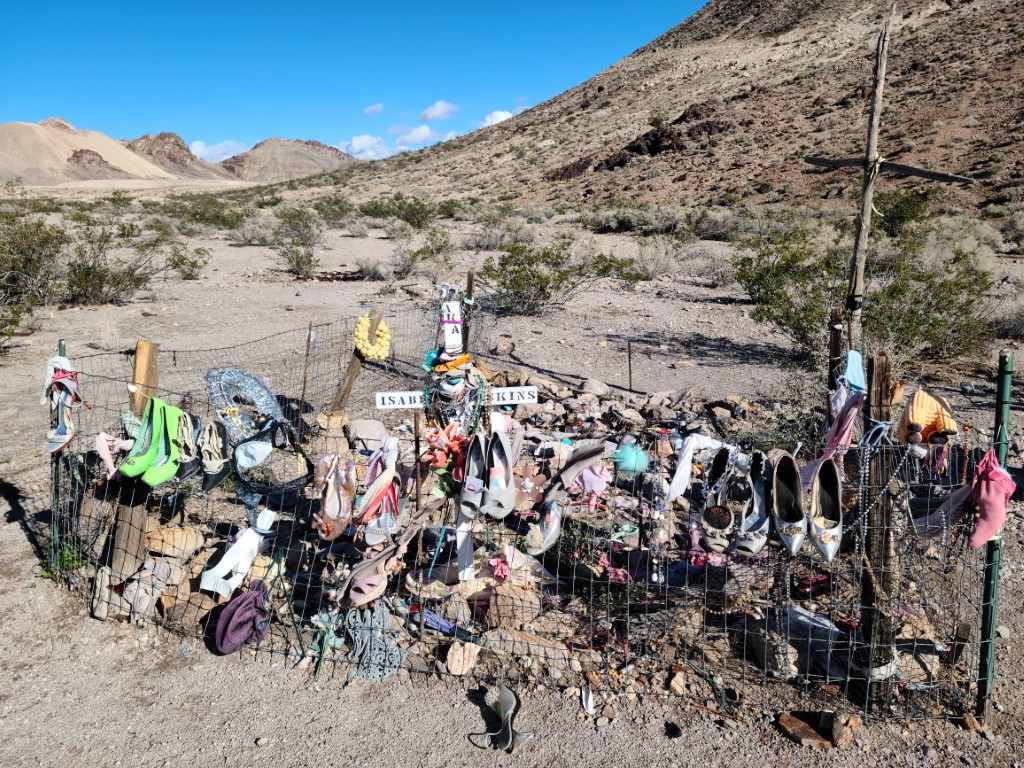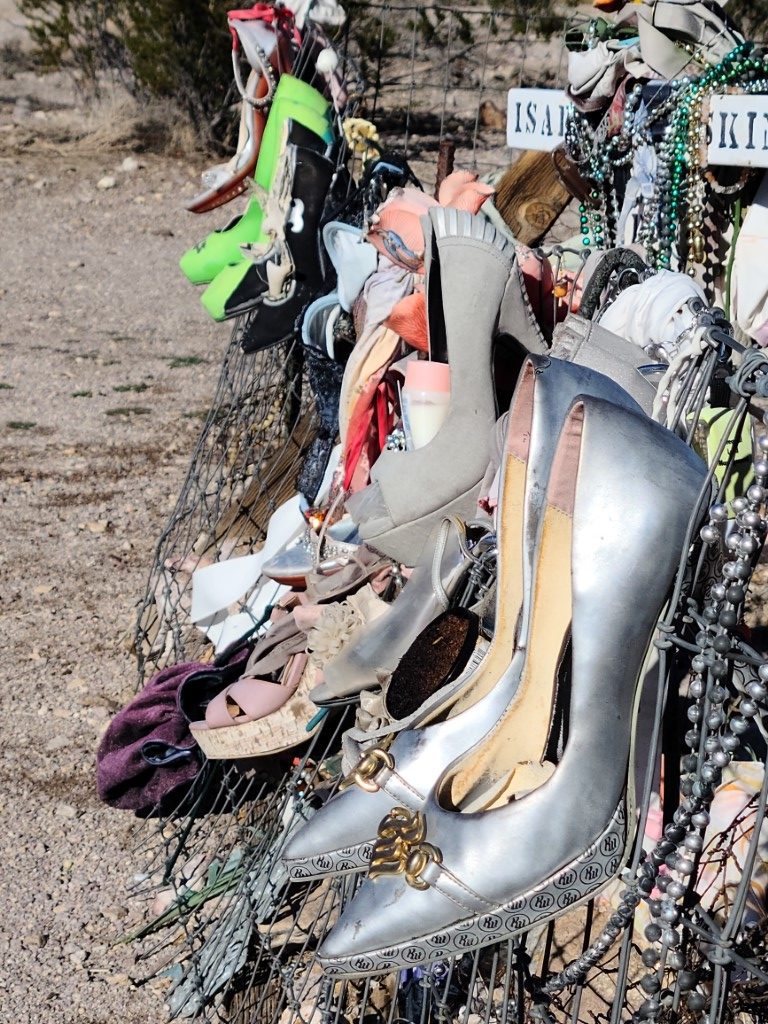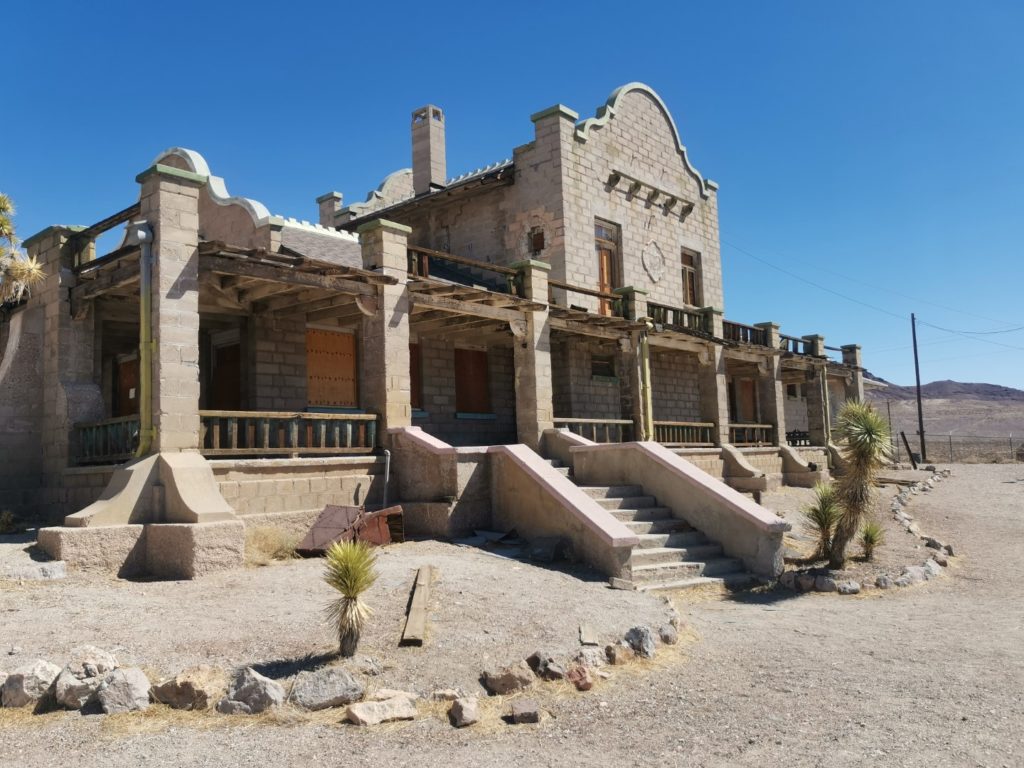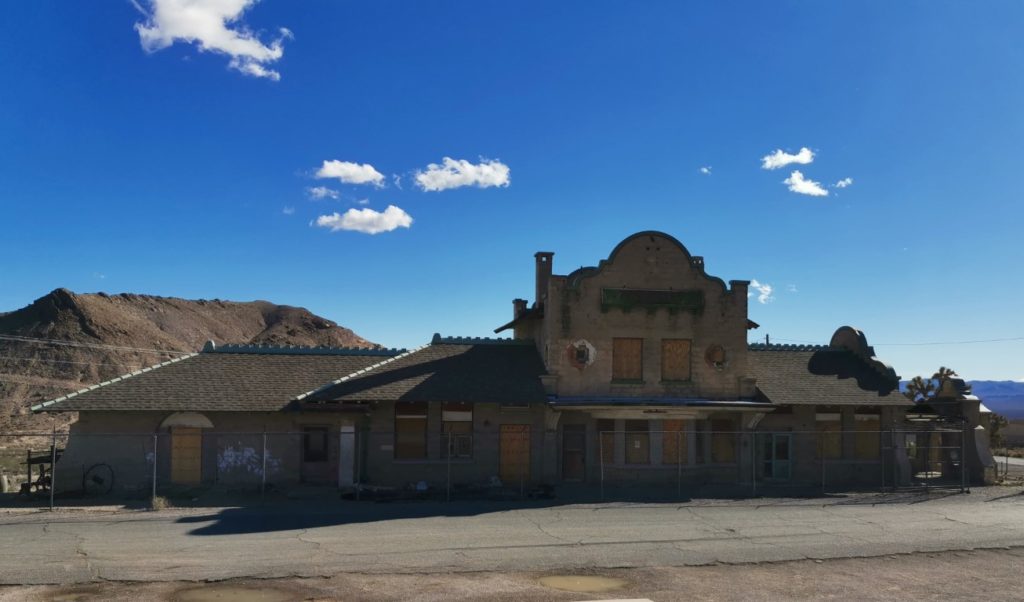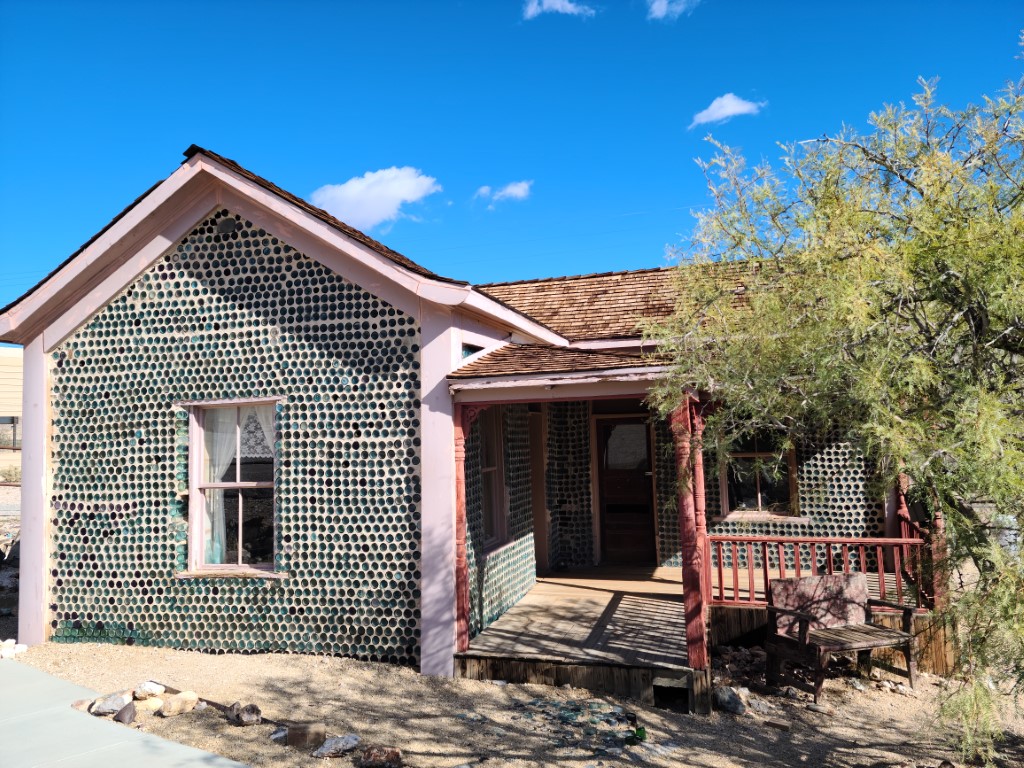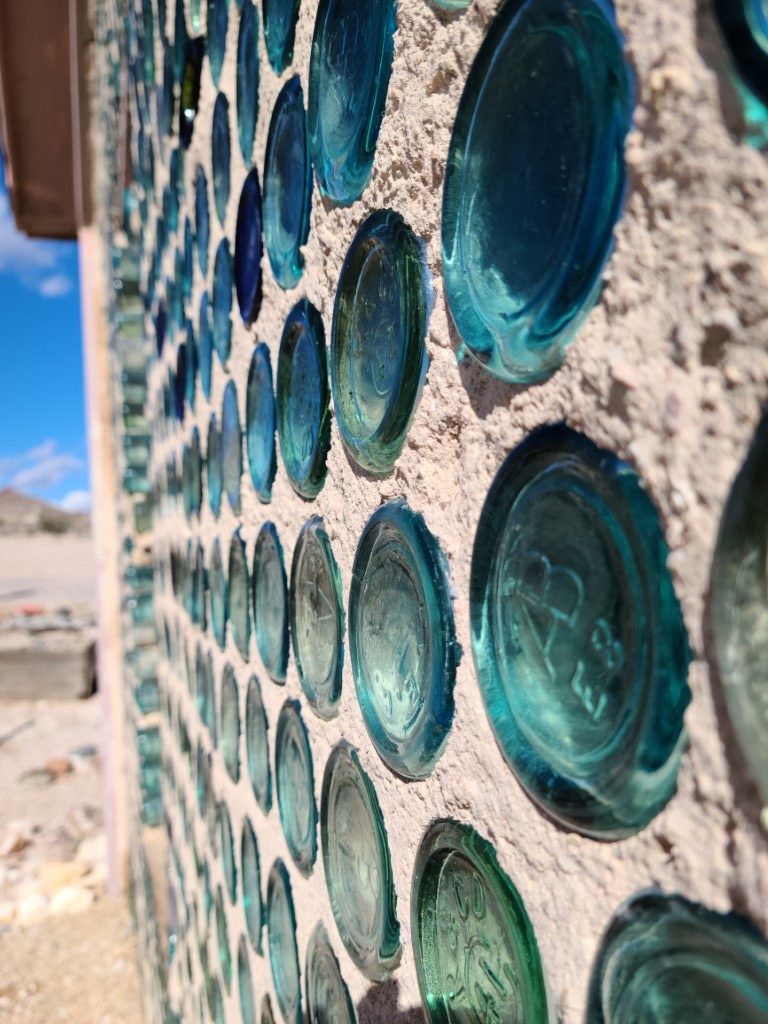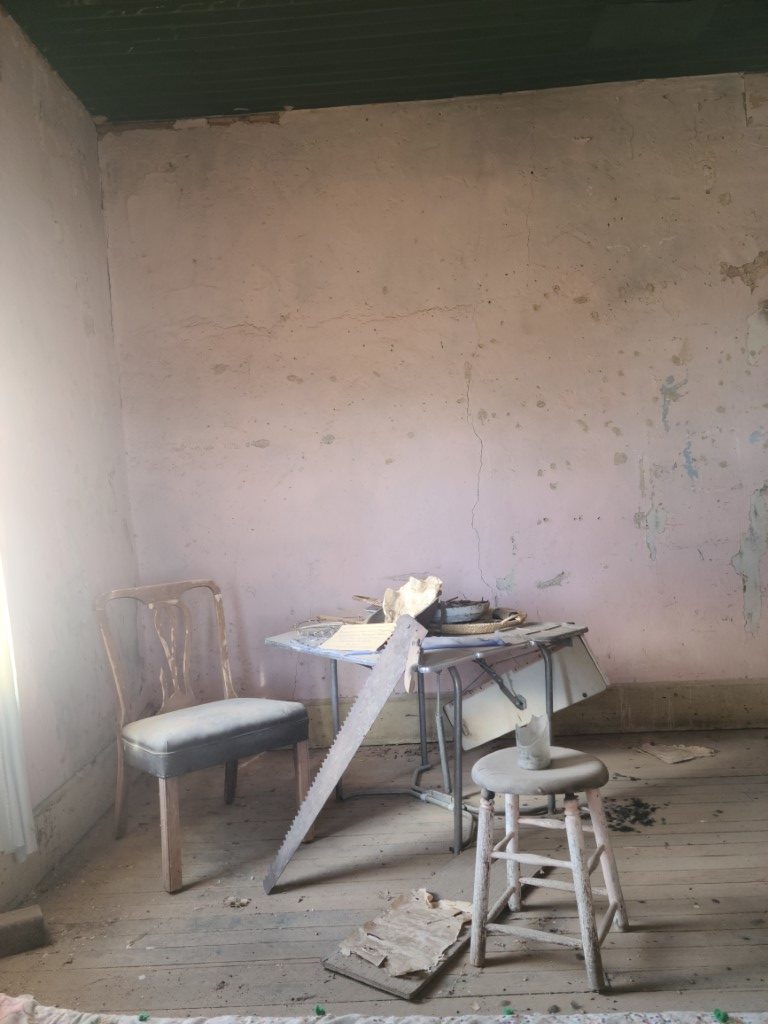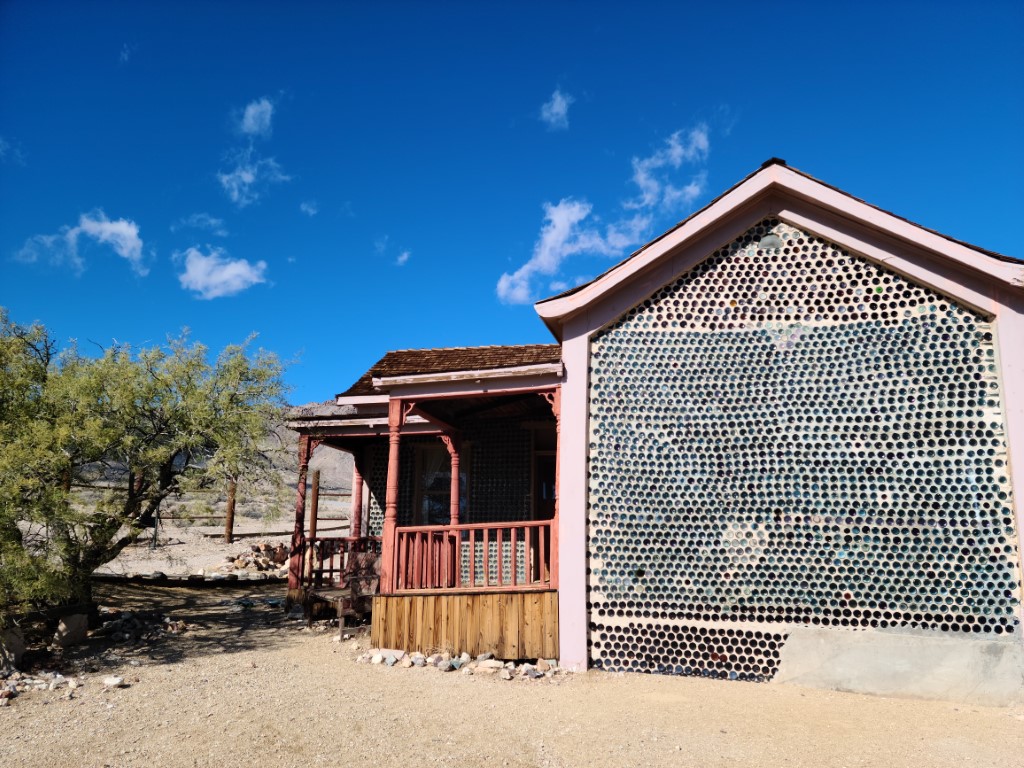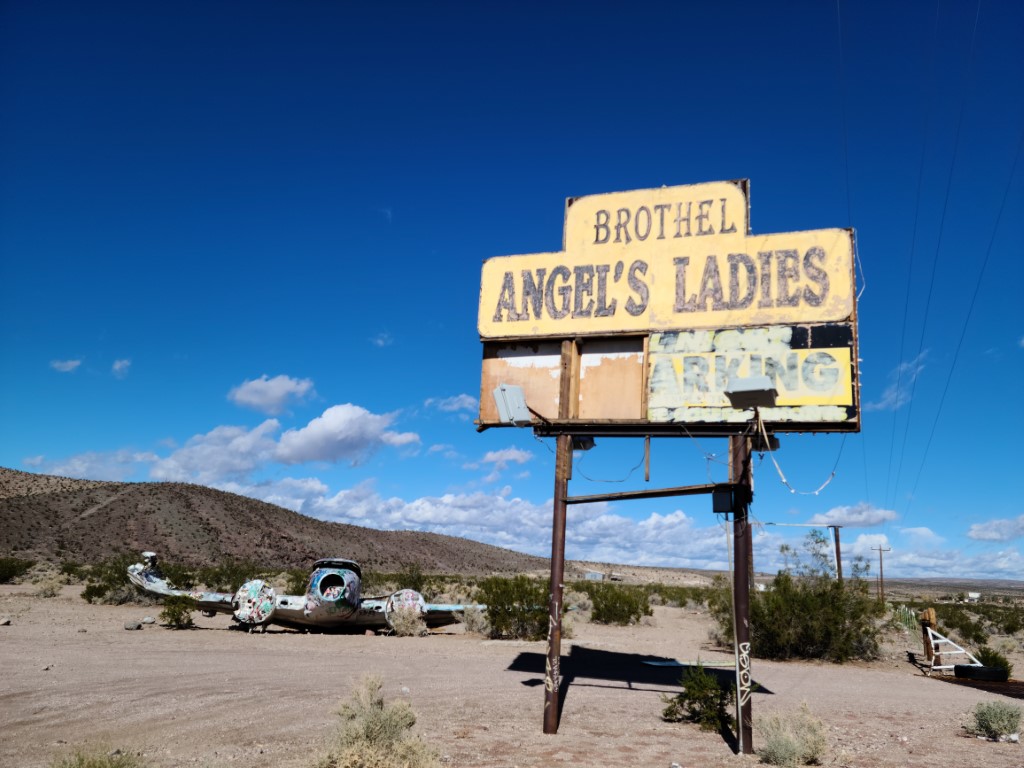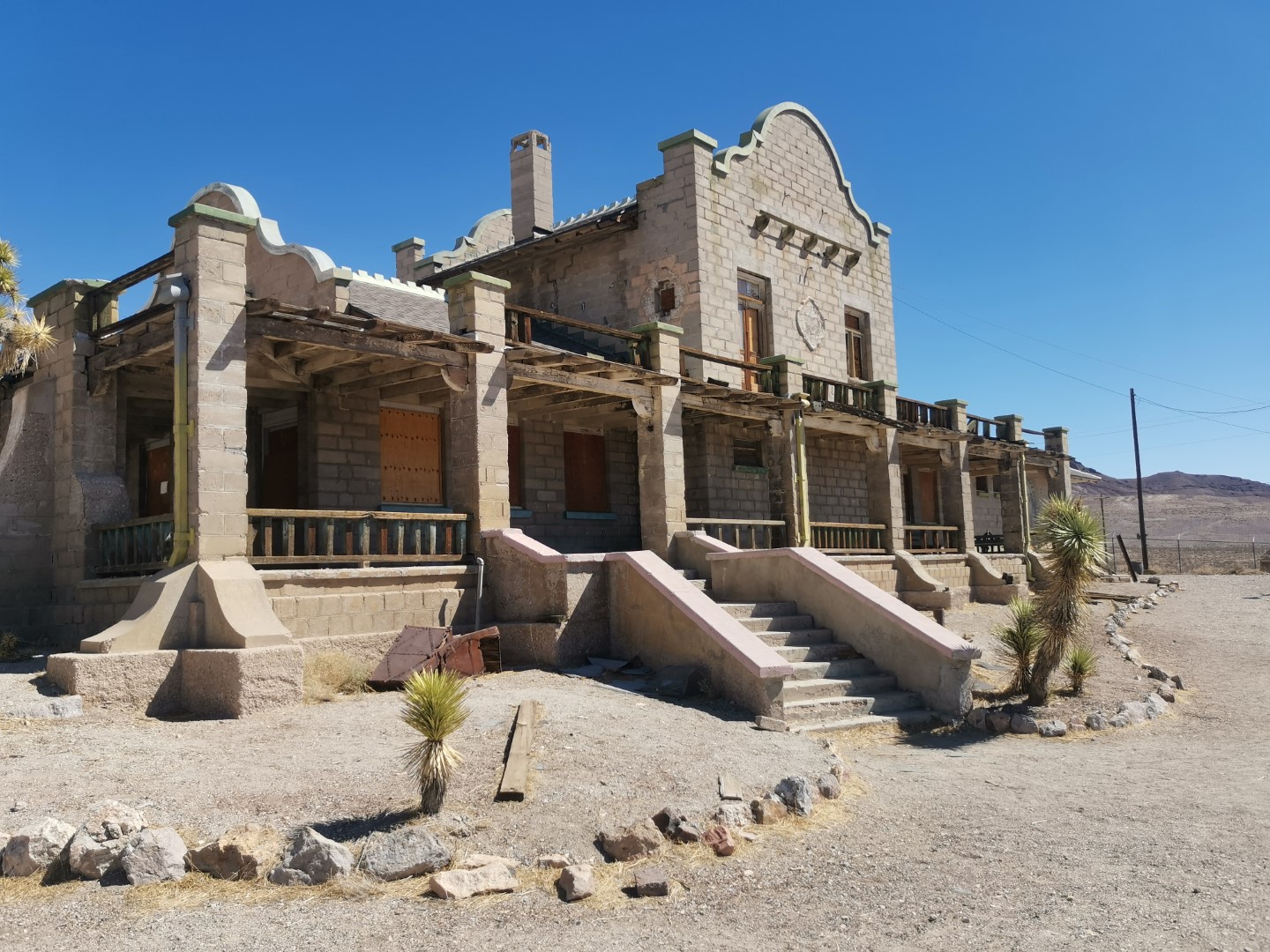There’re many different ghost towns in the USA but almost all of them have a little feeling of life preservation, like a fading fire flame that still trying to survive. Probably you’re expecting to find some remnants of local life, or museums, tourist attractions, gift shops… Nope. Not in Rhyolite. Rhyolite looks more like archaeological excavations where only ruins of the buildings tell you the history of the past, the history of a very short period of blooming and the following decay.
There’re also amazing statues nearby in Rhyolite’s District of Shadows (Goldwell Open Air museum) that magnify the impression of walking with the ghosts. Slowly explore and let them lead you into the past.
Rhyolite glory times and death
The history of Rhyolite started in 1904 and in 1916 it was abandoned almost as rapidly as it rose. His glory started in the Gold Rush era when in August 1904 two guys Cross and Harris found gold all over the hill. They built a two-man mining camp in January 1905, and after the word about new treasure found fastly spread all the way north to Goldfield and Tonopah cities, people started to gather in that area and it became a town with a 1500 population in two weeks! And grew up to 3000 people in about 6 months.
Buildings started to boom everywhere all over the town. There were lodges, stores, about 16 restaurants, 50 saloons, and 36 gambling tables. Soon they had their own implementation of electricity and contracted Las Vegas and Tonopah Railroad to run a spur line to the area.
Cook Bank
Cook Bank was established by the Cook brothers in 1905. The first bank location of John S. Cook and Company Bank was in Goldfield and later the same year brothers opened a new branch in Rhyolite. That building had 3 stores made of pure concrete and the first floor housed the Post Office. The interior was finished with marble staircases and it had all modern at those times bells and whistles like electricity and indoor plumbing.
Construction was finished in 2 years and after 3 years of exploitation it was closed and John Cook sold all building’s fixtures in 1910.
Nowadays it’s the most iconic building in Rhyolite and is one of the most photographed ruins in Nevada. It also appeared in many movies such as The Island, Delusion, Six-string Samurai, and many others.
Just next to the Cook bank another businessman John Overbury started the construction of the Overbury building. It housed another bank (First National Bank of Rhyolite), a dentist, and attorney’s offices. Initially, it was meant to be a two-stories building, but looking at the project of Cook Bank, Overbury quickly added 3rd story to his building as well to not give in to his neighbor.
Rhyolite in 1907 was a really booming and modern town with concrete sidewalks, electric lights, telephone and telegraph lines, newspapers, police and fire departments, a hospital, school, train station, at least three banks, an opera house, a public swimming pool, and two churches.
And as almost any more or less big town at those times, Rhyolite has its own Red-Light district that attracted women from far away cities like San Francisco. Although men could freely come to that area, women who worked in Red-Light district were discouraged from visiting any saloons or even groceries outside of the district.
Mona’s grave
At the border of the city, you can find the fake grave and a pretty interesting story of one girl, Mona, who was working in Rhyolite. Her story actually does not differ a lot from other ones – she was a dutiful wife at the beginning, but after her husband was accused of forging checks her life started to change. Her husband left the town (they lived in Colorado) and asked his friend to look after his wife.
That guy, Fred, and our Mona (known as Isabel in her previous and respectable life) quickly fell in love with each other. They were moving from town to town where Mona was working in Red-Light districts and her boyfriend Fred was robbing her clients. Trying to find money to pay off Fred’s 300$ fine while he was in jail, Mona moved to Rhyolite. After Fred was released from jail, he reunited with her here and their relationship ended in a very tragic way – Fred shot Mona, she died and he was sentenced to first-degree murder and life in prison.
Mona’s first husband later claimed her body and put her to rest in her family plot in Washington state. But many years after Mr. Heisler, who ran a small museum and a gift shop out of the train depot, created a fake grave for Mona telling tourists that she couldn’t be buried in Rhyolite’s cemetery because of her profession.
That ‘grave’ standing nowadays at the edge of the town and it’s filled with flowers and shoes…
The wave of financial panic that happened in same 1907 was the start of the end of the town. The city was trying to survive for 3 more years, but businesses started to fail and close. Finally, in 1911 the mine was also closed and in 1916 Nevada-California Power Company turned off the electricity and removed its lines. Lights were turned off for good and the town met its last sunset.
Train depot
This building is one of the few complete structures left in the town. It serves as a reminder of the Rhyolite’s glory days buried deep in the past. Construction started in September 1907 by Las Vegas and Tonopah railroad companies. Depot was made of concrete blocks in the Mission Revival Style. Based on the traditions of that time there was a gentlemen’s waiting area on the east end and a ladies’ waiting area on the west end of the station. At the time the depot was built, the local newspaper claimed it was “the finest in the state.”
Fun fact that it’s still preserved in very good condition just because it couldn’t be moved away to another town like many buildings were.
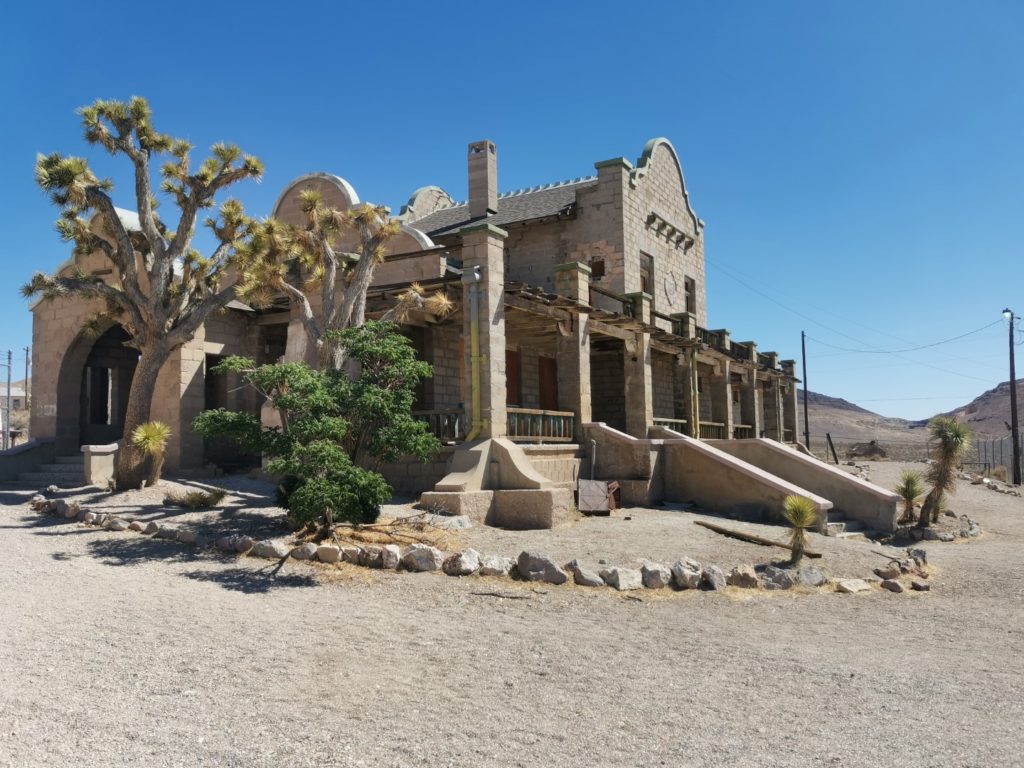
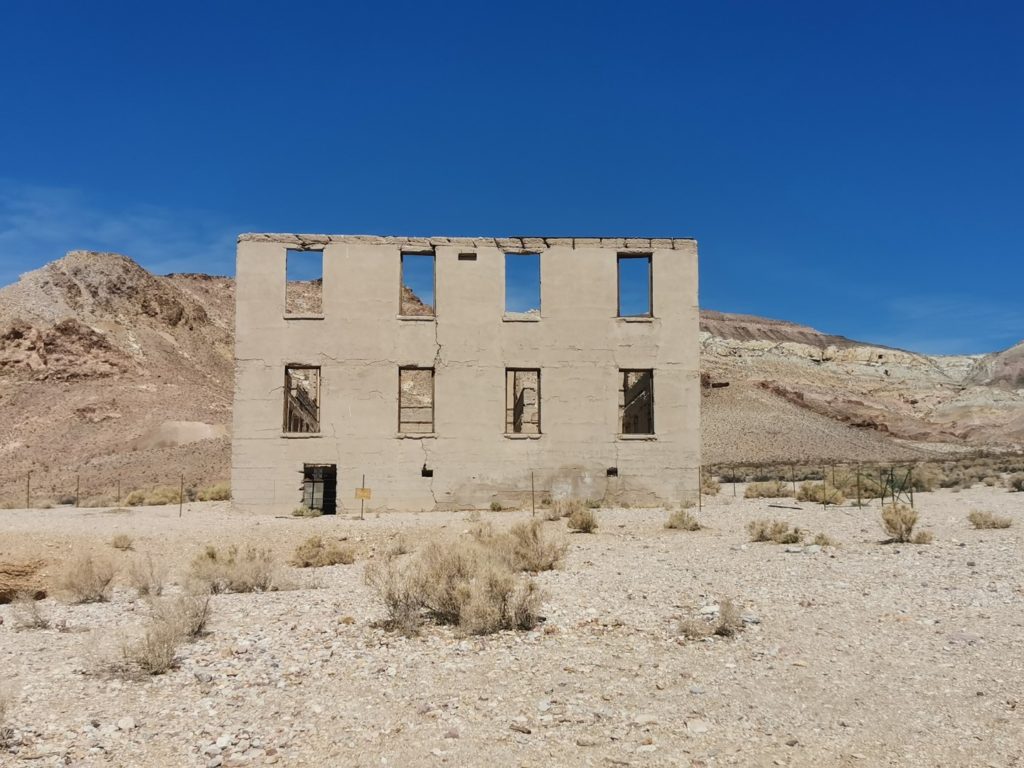
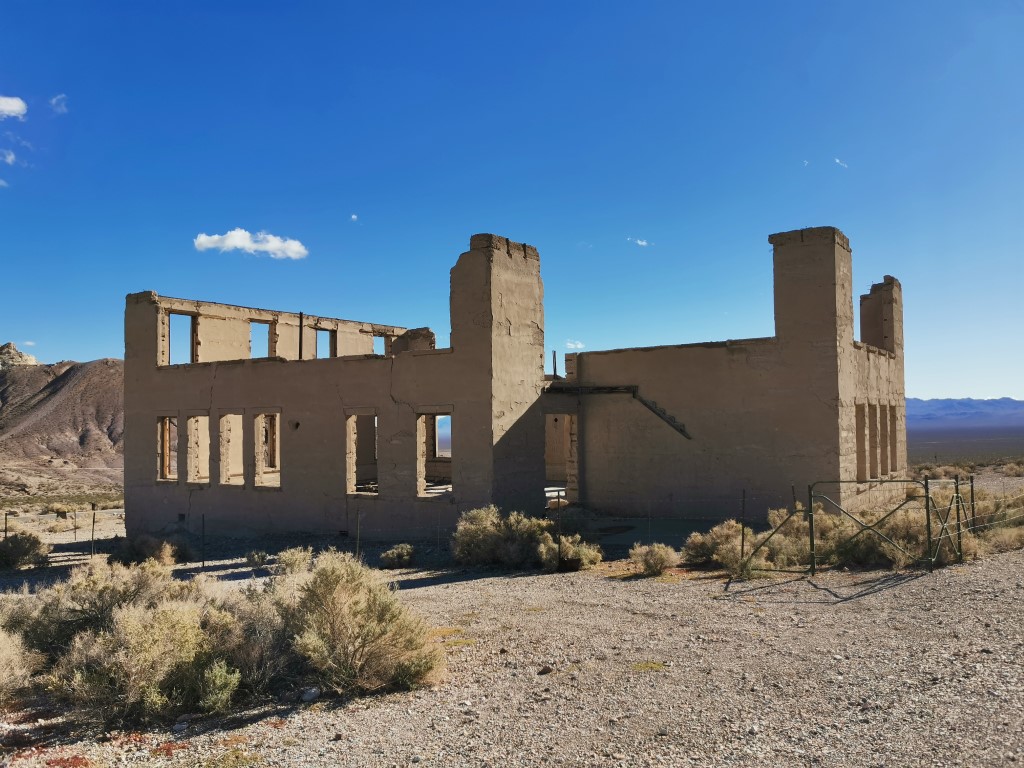

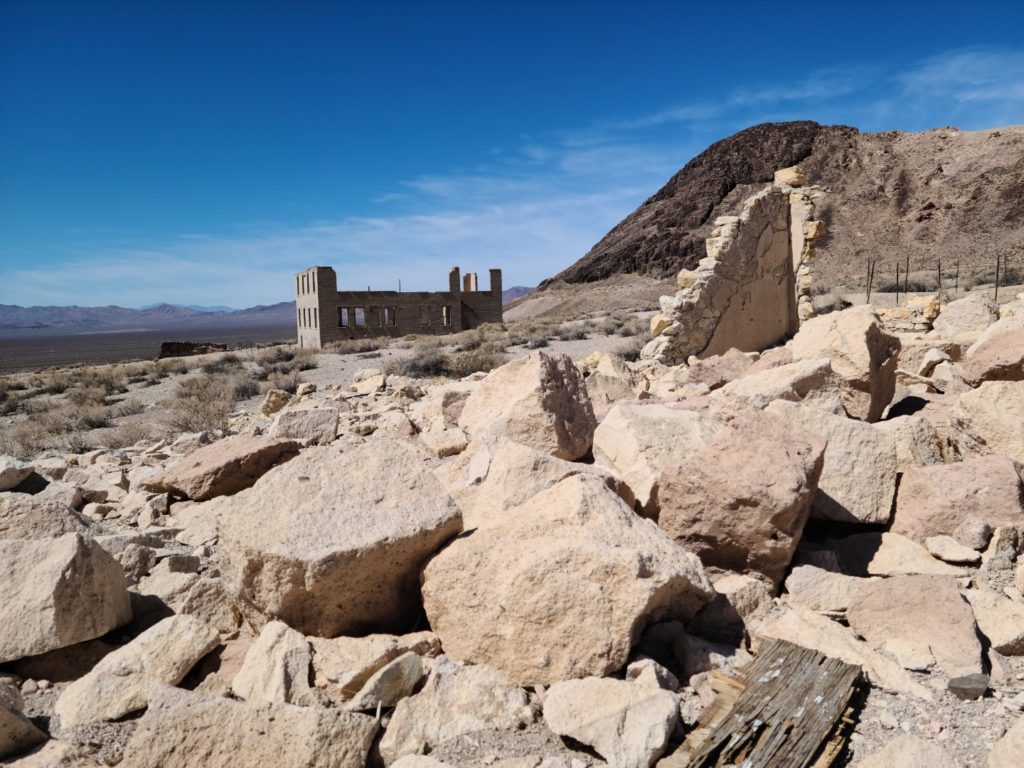
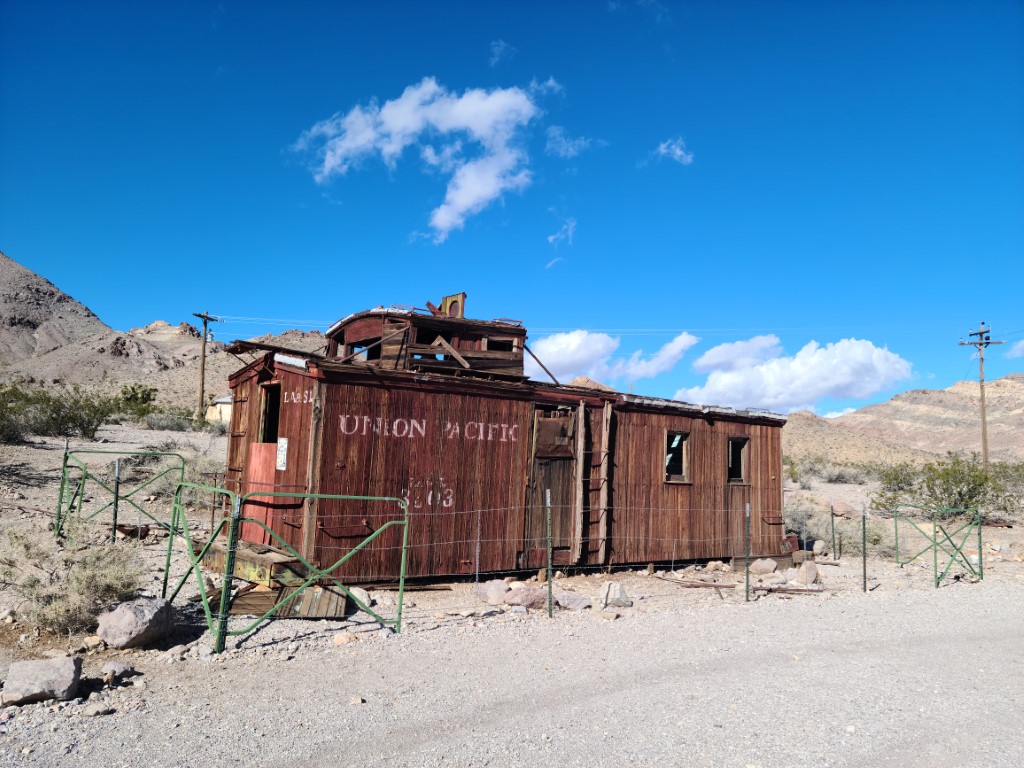
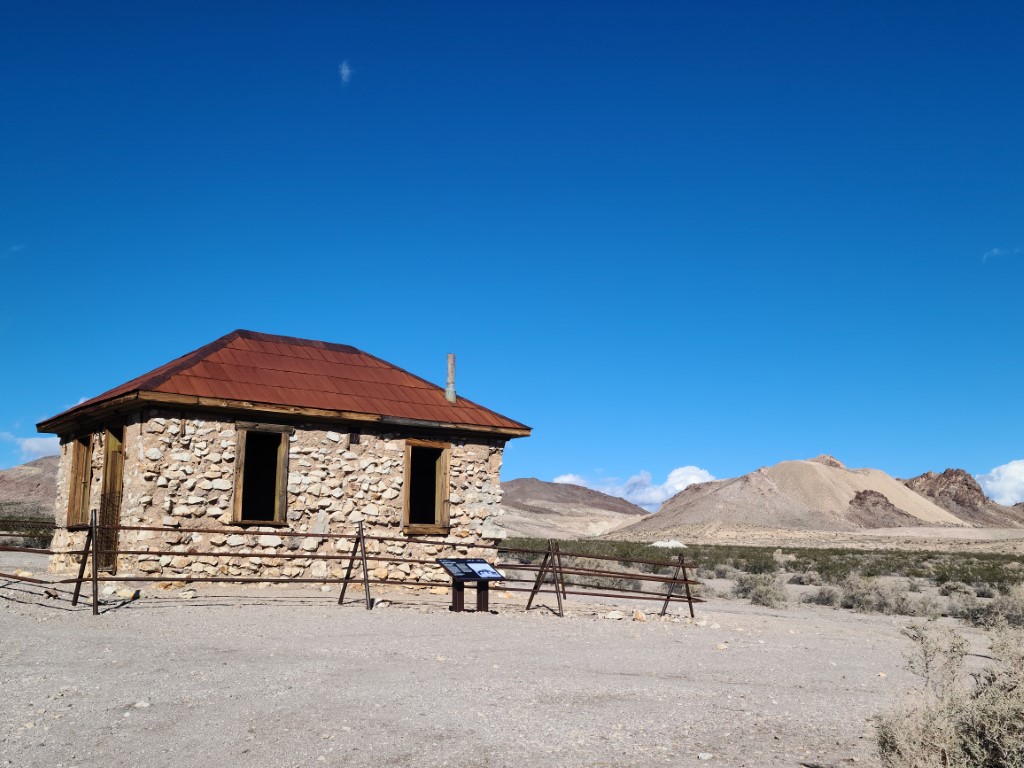
Tom Kelly Bottle House
This place is truly unique and is a landmark of Rhyolite! Actually, it’s one of the few remaining buildings of ‘bottle house architecture in the USA.
Bottle houses were not uncommon in Nevada in old times. Wood was really expensive, and miners built their houses with all materials they could possibly find. Glass bottles were one of the easy-to-find and very cheap materials. Also, bottles are cool in summer and could relatively well keep the heat in winter, so it was a great deal between quality and the price.
Tom Kelly was an Australian-born stonemason who came to Rhyolite seeking gold like many others… He literally used 5000 bottles for building his house! But after construction was finished Tom decided to sell his house from the auction instead of living in it.
This house was abandoned in 1914 as almost all other houses in Rhyolite. But in this case, it was not the end of the story. Paramount Pictures company renovated the structure in 1924 as they wanted to use it in the movie “Wanderer of the Wasteland”. Later the same year Tom’s house also appeared in the movie “The Air Mail”.
House was open for visitors but because of vandalism acts it’s closed now and you can take a look at some remaining furniture only through the windows.

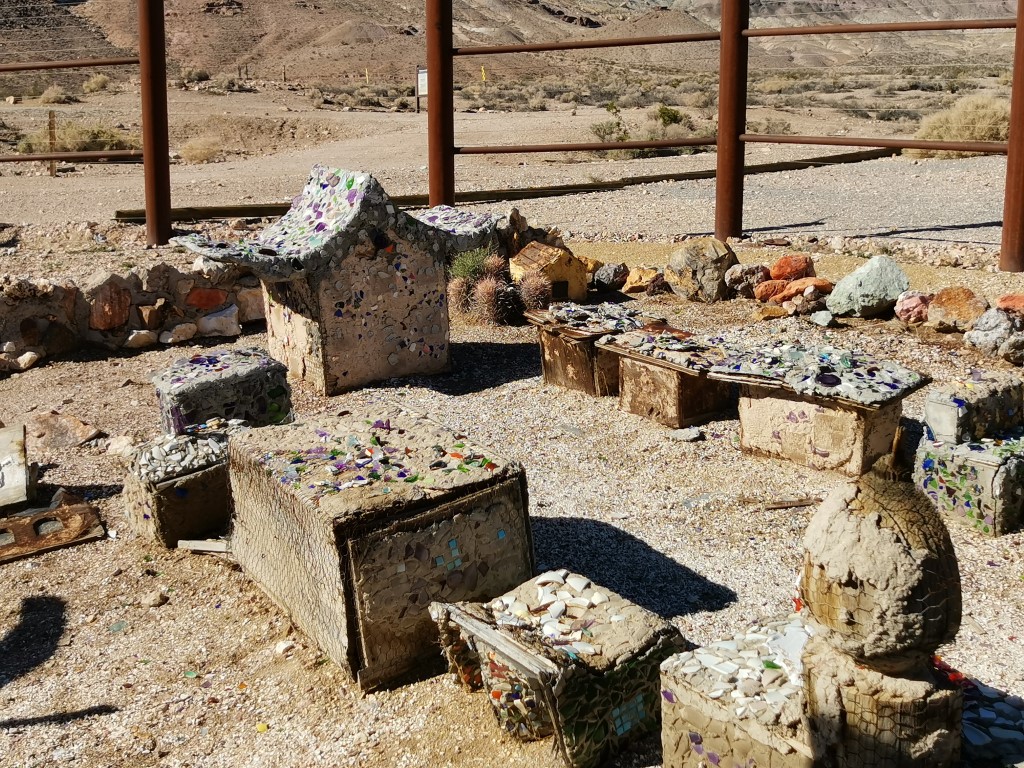
The Bullfrog-Rhyolite Cemetery
Big cemetery located outside of the Rhyolite town. At that time it served both Rhyolite and neighboring Bullfrog town.
Wooden headboards that are older than a one-century-old… Scenic landscape of endless hills. It’s very peaceful and quiet there. Some tombs have names, although many of them don’t. The history of Rhyolite’s citizens buried here is already gone… as the city did.
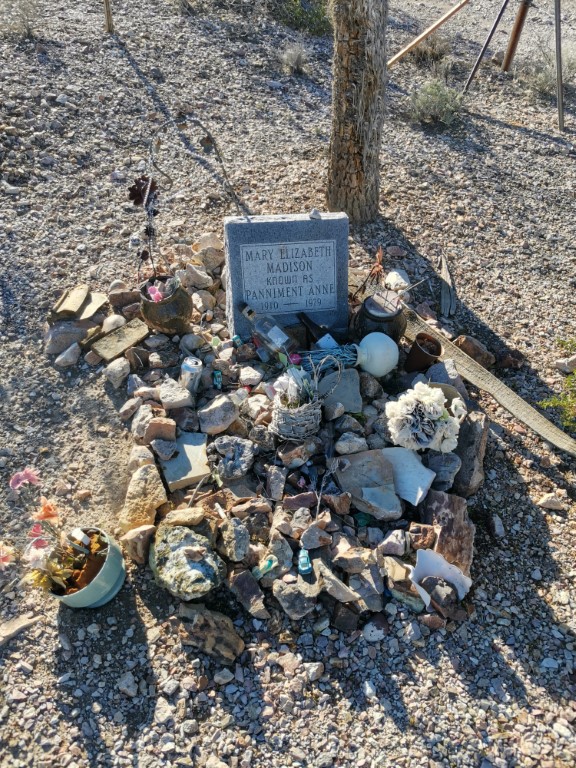
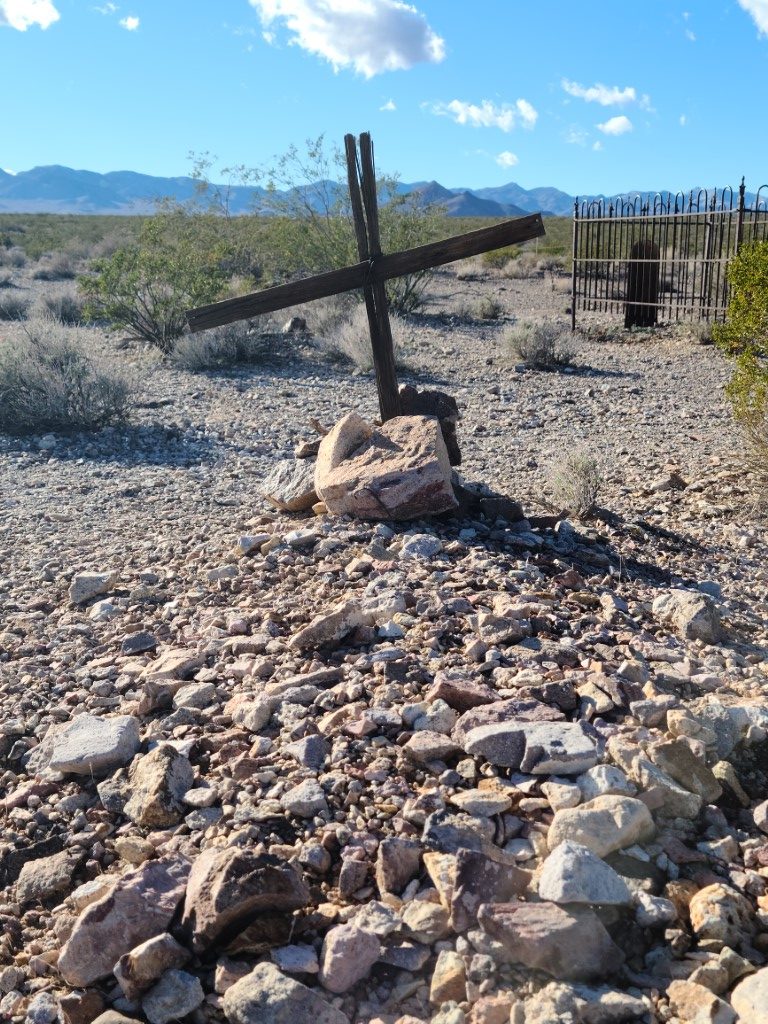
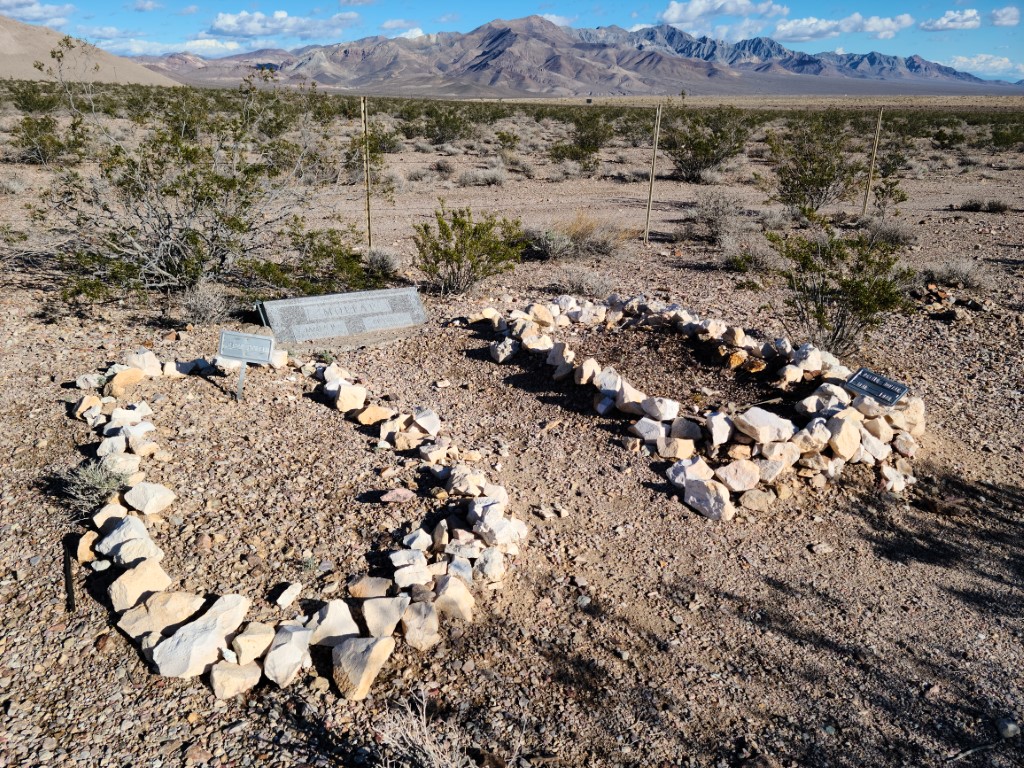
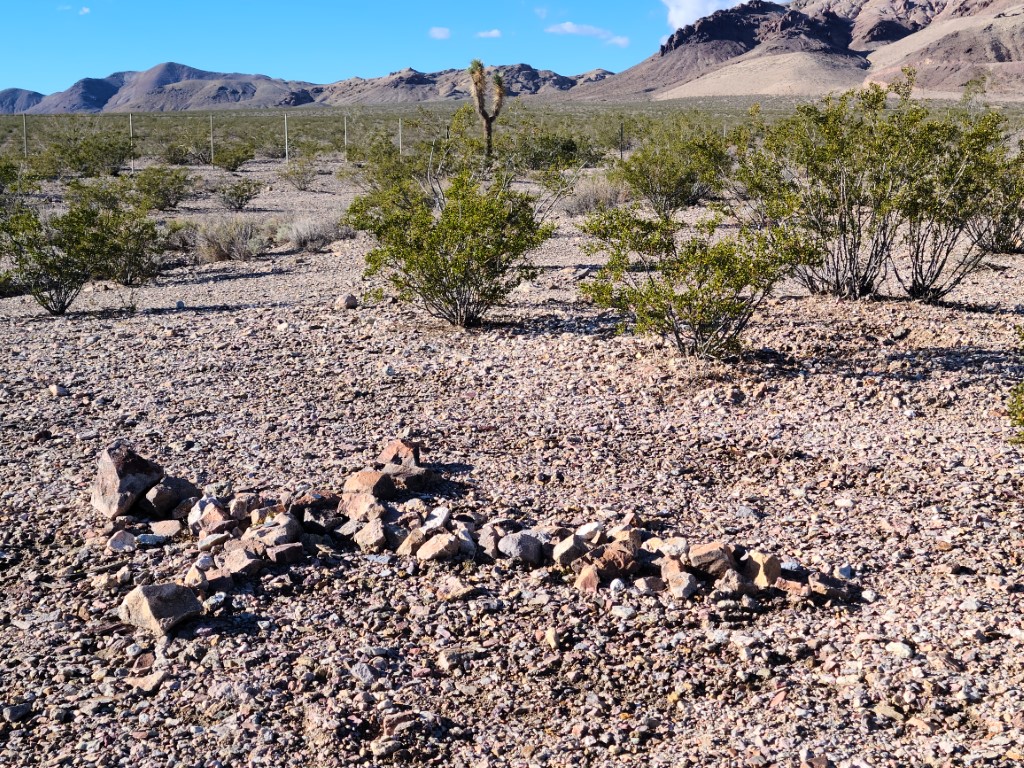
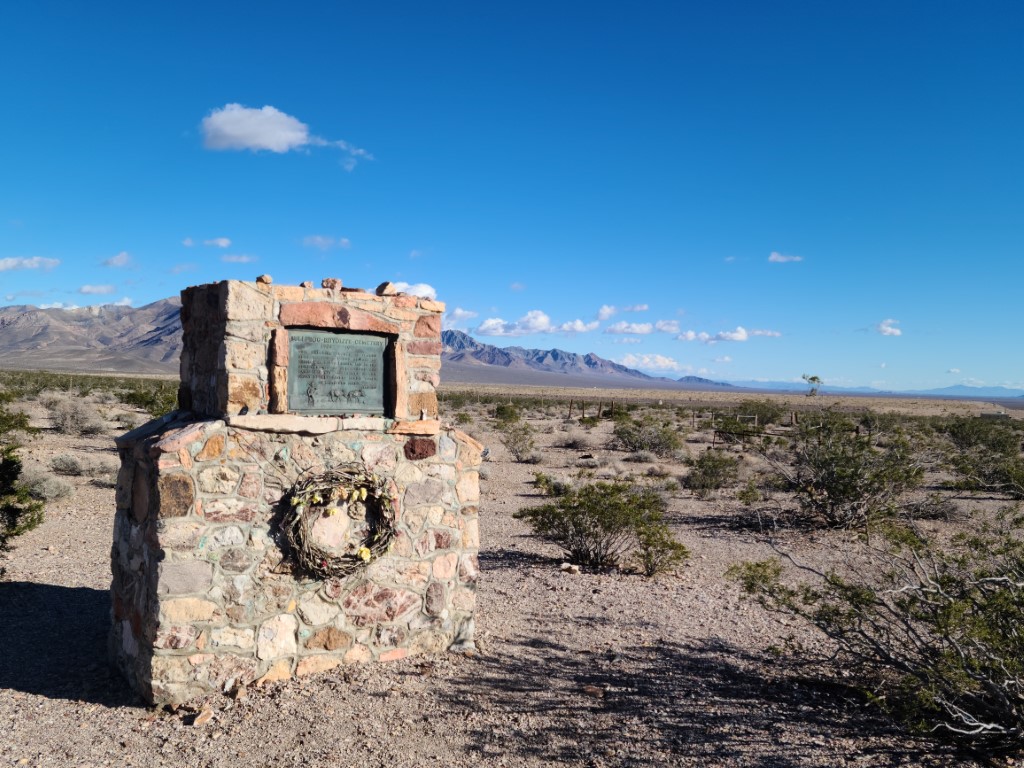
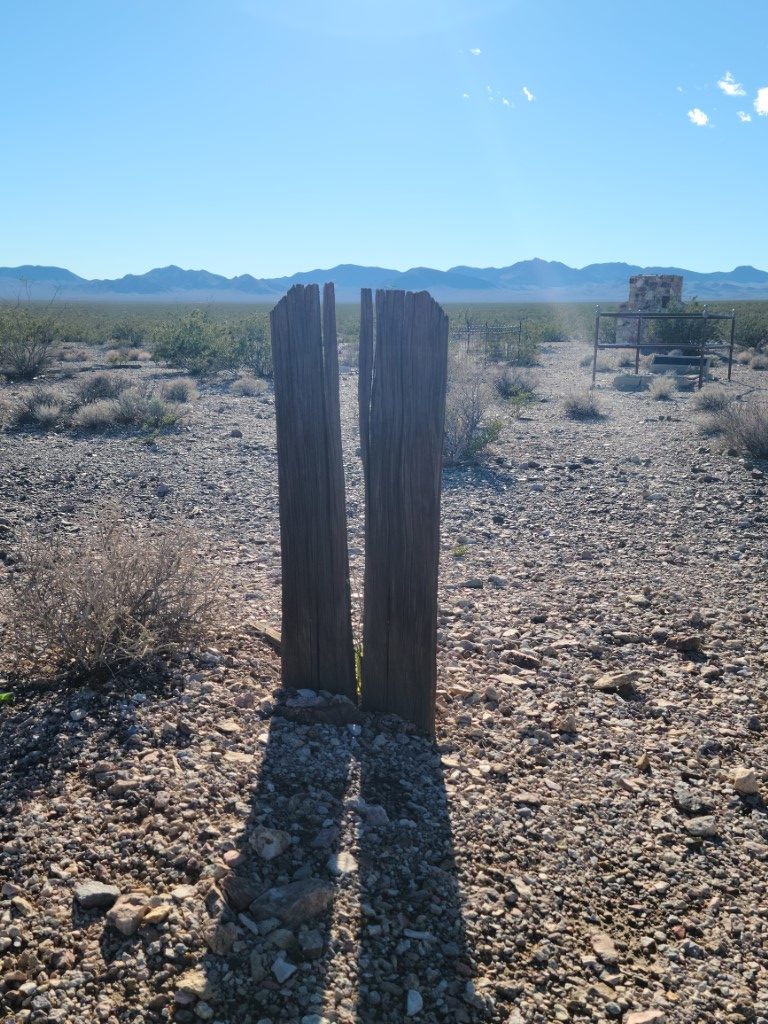
Admission/Facilities
Rhyolite town is located on BLM lands and is admission free. It is open and welcomes visitors from sunrise to sunset, seven days a week. Vault toilets are available near the train depot building.

